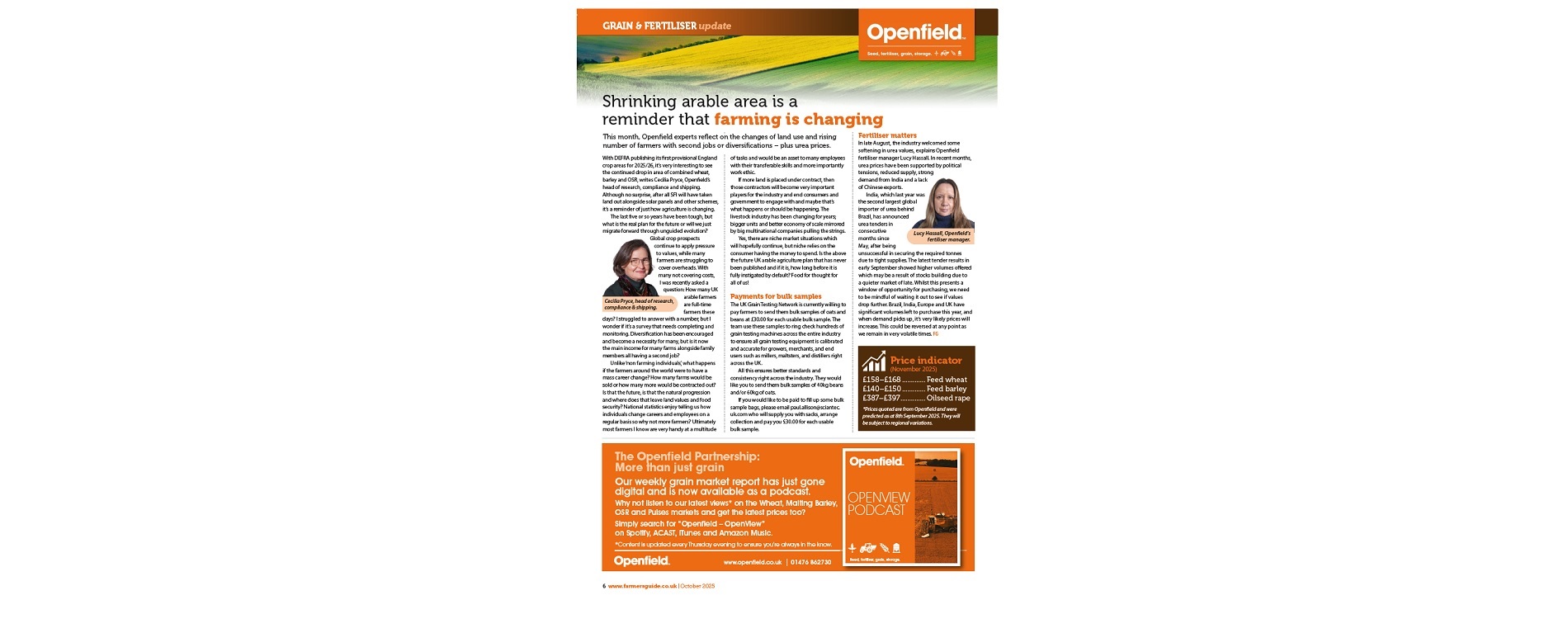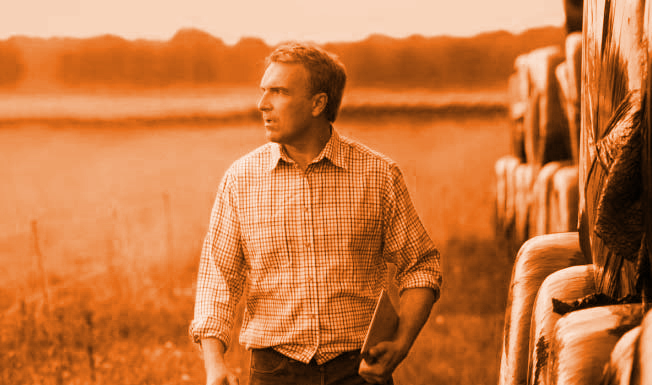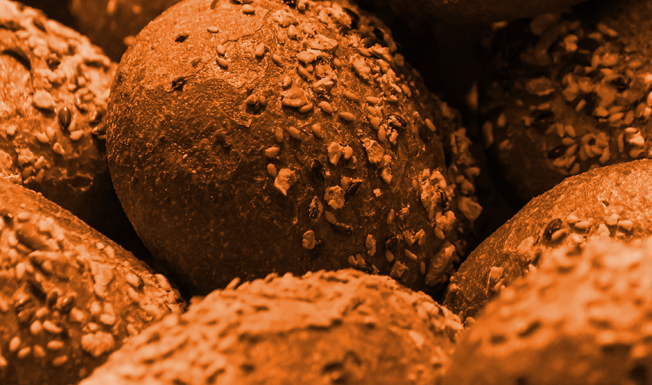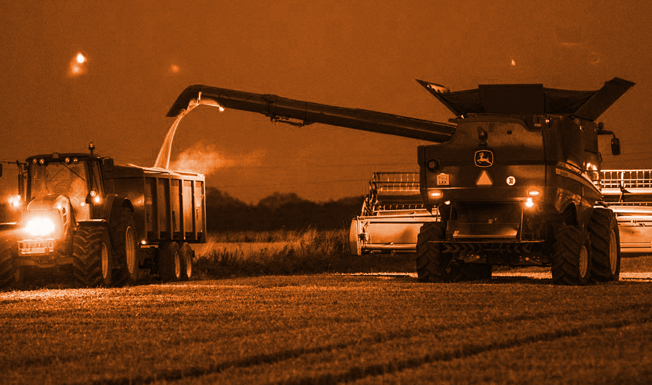Shrinking arable area is a reminder that farming is changing
The following article has been written for and published by Farmers Guide. It is protected by copyright and may not be reproduced in part or whole without the written express permission of both Openfield and Farmers Guide.
This month, Openfield experts reflect on the changes of land use and rising number of farmers with second jobs or diversifications – plus urea prices.
With DEFRA publishing its first provisional England crop areas for 2025/26, it’s very interesting to see the continued drop in area of combined wheat, barley and OSR, writes Cecilia Pryce, Openfield’s head of research, compliance and shipping.
Although no surprise, after all SFI will have taken land out alongside solar panels and other schemes, it’s a reminder of just how agriculture is changing. The last five or so years have been tough, but what is the real plan for the future or will we just migrate forward through unguided evolution?
Global crop prospects continue to apply pressure to values, while many farmers are struggling to cover overheads. With many not covering costs, I was recently asked a question: How many UK
arable farmers are full-time farmers these days? I struggled to answer with a number, but I wonder if it’s a survey that needs completing and monitoring. Diversification has been encouraged and become a necessity for many, but is it now the main income for many farms alongside family members all having a second job?
Unlike ‘non farming individuals’, what happens if the farmers around the world were to have a mass career change? How many farms would be sold or how many more would be contracted out? Is that the future, is that the natural progression and where does that leave land values and food security? National statistics enjoy telling us how individuals change careers and employees on a regular basis so why not more farmers? Ultimately most farmers I know are very handy at a multitude of tasks and would be an asset to many employees with their transferable skills and more importantly work ethic.
If more land is placed under contract, then those contractors will become very important players for the industry and end consumers and government to engage with and maybe that’s what happens or should be happening. The livestock industry has been changing for years; bigger units and better economy of scale mirrored by big multinational companies pulling the strings.
Yes, there are niche market situations which will hopefully continue, but niche relies on the consumer having the money to spend. Is the above the future UK arable agriculture plan that has never
been published and if it is, how long before it is fully instigated by default? Food for thought for all of us!
Payments for bulk samples
The UK Grain Testing Network is currently willing to pay farmers to send them bulk samples of oats and beans at £30.00 for each usable bulk sample. The team use these samples to ring check hundreds of grain testing machines across the entire industry to ensure all grain testing equipment is calibrated and accurate for growers, merchants, and end users such as millers, maltsters, and distillers right across the UK.
All this ensures better standards and consistency right across the industry. They would like you to send them bulk samples of 40kg beans and/or 60kg of oats. If you would like to be paid to fill up some bulk sample bags, please email paul.allison@sciantec.uk.com who will supply you with sacks, arrange collection and pay you £30.00 for each usable bulk sample.
Fertiliser matters
In late August, the industry welcomed some softening in urea values, explains Openfield fertiliser manager Lucy Hassall. In recent months, urea prices have been supported by political tensions, reduced supply, strong demand from India and a lack of Chinese exports.
India, which last year was the second largest global importer of urea behind Brazil, has announced urea tenders in consecutive months since May, after being unsuccessful in securing the required tonnes due to tight supplies. The latest tender results in early September showed higher volumes offered which may be a result of stocks building due to a quieter market of late. Whilst this presents a window of opportunity for purchasing, we need to be mindful of waiting it out to see if values drop further. Brazil, India, Europe and UK have significant volumes left to purchase this year, and when demand picks up, it’s very likely prices will increase. This could be reversed at any point as we remain in very volatile times.




